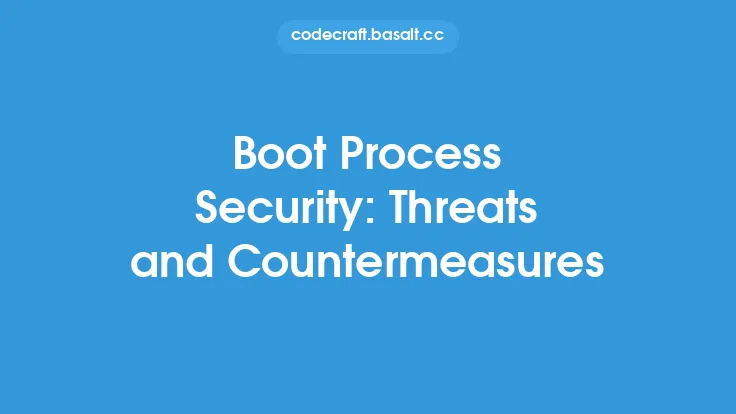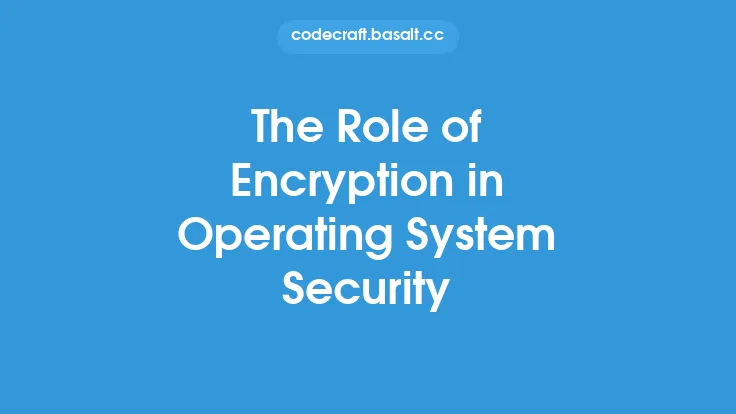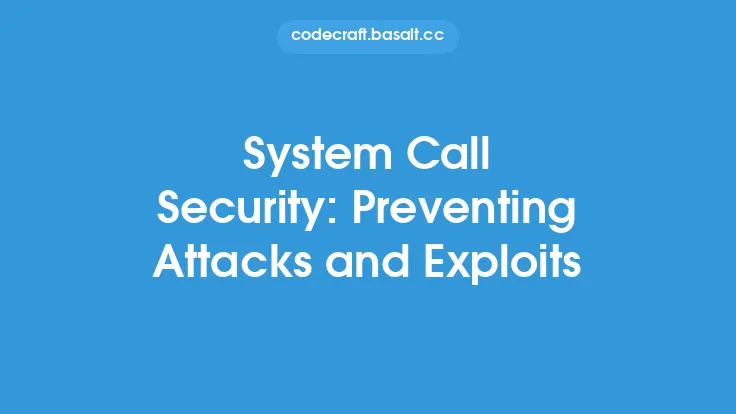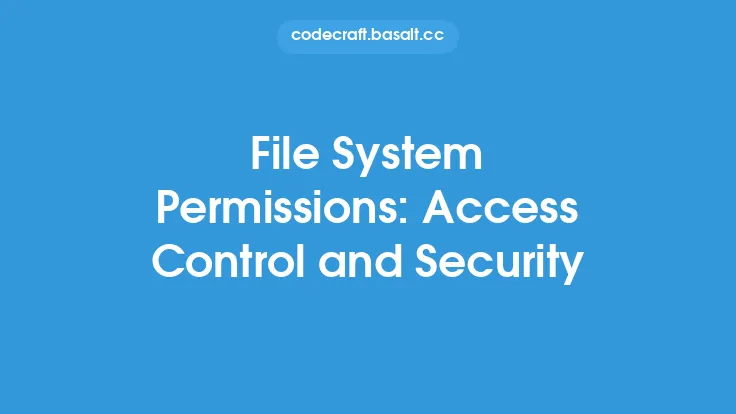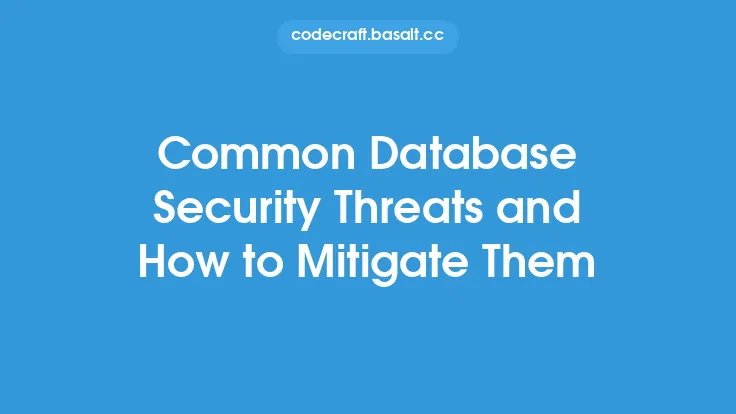Operating systems are the backbone of modern computing, providing a platform for running applications, managing hardware resources, and storing data. However, this critical role also makes them a prime target for security threats. In this article, we will delve into the various operating system security threats and countermeasures, exploring the evergreen information aspect of this topic.
Introduction to Operating System Security Threats
Operating system security threats can be broadly categorized into several types, including malware, unauthorized access, denial of service (DoS) attacks, and data breaches. Malware, such as viruses, worms, and trojans, can compromise the integrity of the operating system, allowing attackers to gain unauthorized access, steal sensitive data, or disrupt system operations. Unauthorized access, on the other hand, can occur through weak passwords, unpatched vulnerabilities, or social engineering tactics, enabling attackers to exploit system resources or sensitive data. DoS attacks, which overwhelm the system with traffic, can render it unavailable, while data breaches can result in the theft of sensitive information, such as personal data or intellectual property.
Types of Operating System Security Threats
There are several types of operating system security threats, each with its unique characteristics and potential impact. Some of the most common types include:
- Rootkits: Malicious software that hides the presence of an attacker or malware from the operating system, making it difficult to detect and remove.
- Keyloggers: Malware that captures keystrokes, allowing attackers to steal sensitive information, such as passwords or credit card numbers.
- Ransomware: Malware that encrypts files or locks the system, demanding payment in exchange for the decryption key or unlock code.
- SQL Injection: Attacks that target databases, injecting malicious code to extract or modify sensitive data.
- Cross-Site Scripting (XSS): Attacks that inject malicious code into web applications, allowing attackers to steal sensitive data or take control of user sessions.
Countermeasures for Operating System Security Threats
To mitigate the risks associated with operating system security threats, several countermeasures can be implemented. These include:
- Firewalls: Network security systems that control incoming and outgoing traffic, blocking malicious traffic and preventing unauthorized access.
- Intrusion Detection and Prevention Systems (IDPS): Systems that monitor network traffic, detecting and preventing intrusion attempts, such as malware or DoS attacks.
- Encryption: The process of converting plaintext data into unreadable ciphertext, protecting sensitive data from unauthorized access.
- Access Control: Mechanisms that regulate user access to system resources, such as authentication, authorization, and accounting (AAA) protocols.
- Regular Updates and Patches: Applying security updates and patches to fix vulnerabilities, reducing the risk of exploitation by attackers.
Implementing Secure Operating System Configurations
Implementing secure operating system configurations is crucial to preventing security threats. This includes:
- Disabling Unnecessary Services: Disabling services that are not required, reducing the attack surface and minimizing the risk of exploitation.
- Configuring Firewall Rules: Configuring firewall rules to control incoming and outgoing traffic, blocking malicious traffic and preventing unauthorized access.
- Setting Up Access Control Lists (ACLs): Setting up ACLs to regulate user access to system resources, such as files, directories, and network shares.
- Enabling Encryption: Enabling encryption for sensitive data, such as files, emails, or network traffic, protecting it from unauthorized access.
- Implementing Secure Boot Mechanisms: Implementing secure boot mechanisms, such as UEFI Secure Boot, to prevent malware from loading during the boot process.
Best Practices for Operating System Security
To ensure the security of operating systems, several best practices can be followed. These include:
- Regularly Updating and Patching: Regularly updating and patching the operating system, applications, and firmware to fix vulnerabilities and reduce the risk of exploitation.
- Using Strong Passwords: Using strong, unique passwords for all user accounts, reducing the risk of unauthorized access.
- Implementing Multi-Factor Authentication: Implementing multi-factor authentication, such as smart cards, tokens, or biometric authentication, to provide an additional layer of security.
- Monitoring System Logs: Monitoring system logs to detect and respond to security incidents, such as intrusion attempts or malware infections.
- Conducting Regular Security Audits: Conducting regular security audits to identify vulnerabilities, weaknesses, and compliance issues, addressing them before they can be exploited.
Conclusion
Operating system security threats are a significant concern, with various types of threats targeting the integrity, confidentiality, and availability of system resources and sensitive data. However, by implementing countermeasures, such as firewalls, IDPS, encryption, access control, and regular updates and patches, the risks associated with these threats can be mitigated. Additionally, implementing secure operating system configurations, following best practices, and conducting regular security audits can help prevent security incidents and ensure the security and integrity of operating systems. By staying informed and proactive, individuals and organizations can protect their operating systems and sensitive data from the ever-evolving landscape of security threats.
